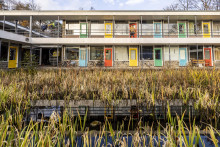Student enrolment is increasing faster than had been anticipated, the newest forecast by the Ministry of Education reveals. Over the next eight years students numbers are expected to increase by at least 48 thousand. That’s the finding of the new monitor that Kences, the umbrella organisation of social housing corporations offering student accommodation, requisitions each year from the forecasting consultancy ABF Research. The primary explanation is the ever growing number of international students, but there’s also an upswing in the number of Dutch university students, and they live away from home more often than students in higher professional education.
Urgent
While it’s true that by 2025 housing for students will have increased by 18 thousand places net, even if that forecast is correct, the shortage will keep escalating. According to Kences director Jolan de Bie, the solution to this urgent housing crisis should first be sought in making more student accommodation available and in better coordination between the housing market and educational policy.
In the current market, students are spending an average of 46 percent of their income on rent, three percentage points higher than in 2019. Of students still living with their parents, 43 percent will not be looking for a room because the rents are too high, the survey conducted last spring revealed.
Studios
Kences identifies a noticeable trend in the growing number of studios (doubling in 9 years) in proportion to the decreasing number of rooms for students with shared facilities. Director De Bie attributes this to current rental and subsidy regulations. ‘These regulations make it financially attractive to build studios and unattractive to build student housing that is not for single dwelling.’
She calls this an extremely undesirable situation: for the wellbeing and social development of younger students in particular it is much better for them to live in shared accommodation.







